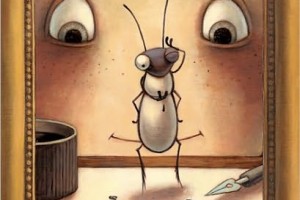Elementary school teachers and adults apprenticing as children’s book writers often ask my opinion on writing strategies: teachers want to engage their students; adults want to become more efficient and practiced with their craft. Even though I am a published writer this is a tough question for me because my process tends to be non-linear–not the best for breaking writing down into teachable moments!
With that said, I have learned a few things from each project I’ve completed–many of which I shared in a recent conversation with Genny Heikka and Aaron Robbins on the Part Time Author Podcast (Episode #5: Hard, But Possible–Sticking With It). Writing begins with a simple concept…writers write.
This piece of advice is particularly appropriate for adults who find that life gets in the way of the creative process. Jot ideas on bits of napkin or in a small notebook that fits in a pocket or purse. Dictate them into your iPhone. Write in the pick-up line at school. The goal is to get your ideas down for a few minutes each day. After our podcast interview, Aaron Robbins wrote to me and said, “Thanks for everything you shared on the Part Time Author
Podcast. I’ve written everyday the last week –a feat largely inspired by
something you said on the show. Writers write. Every time I walk past my
computer, intent on doing something non-writery, I hear your words.
A brief inner debate leads to a 37 year old computer
programmer doing what writers do.”
To apply the “writer’s write” philosophy to students, I suggest writing activities that span curriculum areas because writing crosses every aspect of education and, eventually, the working world:
1. Language Arts:
- Write poems (rhyming, non-rhyming, haiku) or riddles.
- Ask every student to write an opening paragraph of a short 5-paragraph story. Once the paragraph is written, the stories are gathered up and redistributed, so another classmate writes the second paragraph, and so on for the third through fifth paragraphs. Ask the team of 5 writers to present in a reader’s theater exercise. [Story structure: Paragraph #1 introduces a character or two and a problem; in paragraphs #2 and #3 the characters try and fail to solve the problem; paragraph #4 is the successful solution to the problem; paragraph #5 is the conclusion.]
- Write a response to literature by participating in my Kids On KidLit program where student work is posted on my blog.
2. Social Studies: Ask students to research and take a stand on whether they support zoos and write a persuasive essay.
3. Science: Collect grass clippings, leaves and flower petals in a coffee can and design an experiment to record what happens to the biomass over time. Ask students to write a concise one-paragraph conclusion on what’s happening in the can.
4. Math: Write a script of a commercial advertising a math game, such as “21” or “Tangrams”. Why is it fun? What do you learn? Make a video of the students’ commercials.





Leave a Reply
Your email is safe with me.